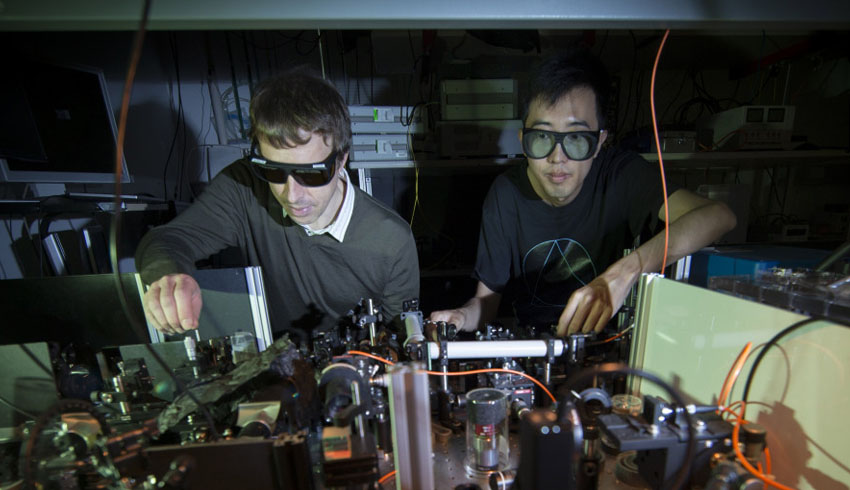The development could underpin versatile platforms for advanced communications and ultra-fast artificial intelligence technologies with flow on benefits for future space technologies.
Professor Andrey Sukhorukov, who led the development of new theoretical concepts with a team of scientists at the Nonlinear Physics Centre of the ANU Research School of Physics, explained, "Light can evolve in up to seven dimensions on our specially designed circuits, which is mind boggling when you realise that the space around us is three-dimensional."
Professor Alexander Szameit from the University of Rostock led the experimental work, including the cutting-edge fabrication of optical circuits.
Dr Kai Wang, who worked on the key aspects of the project at ANU, said enabling light to travel beyond our three-dimensional space is a major breakthrough, and would drastically enhance the capability of today's optical chips.
"High-dimensional network structures can be found in human brains – if optical circuits can emulate this, their computation capability will also be boosted dramatically," he said.
"This takes us into the realm of science fiction, which I think is really exciting. The sky is the limit in terms of potential future applications that could build on our discovery."
Lukas Maczewsky, a PhD scholar who performed the experiments at University of Rostock, said the team's innovation can be used to develop optical switches and sensors that can respond very sharply to transmit or block light.
"Our work is an important step towards creating an ultra-compact and energy-efficient platform for optical networks," Maczewsky said.
"Light can travel inside the circuits on an optical chip but, on a mass-scale, circuits are most efficiently made within one plane – just like roads without overpasses. Without the need to build overpasses on planar circuits, we make better use of the cross-talks of light between neighbouring pathways to engineer the behaviour of light."

